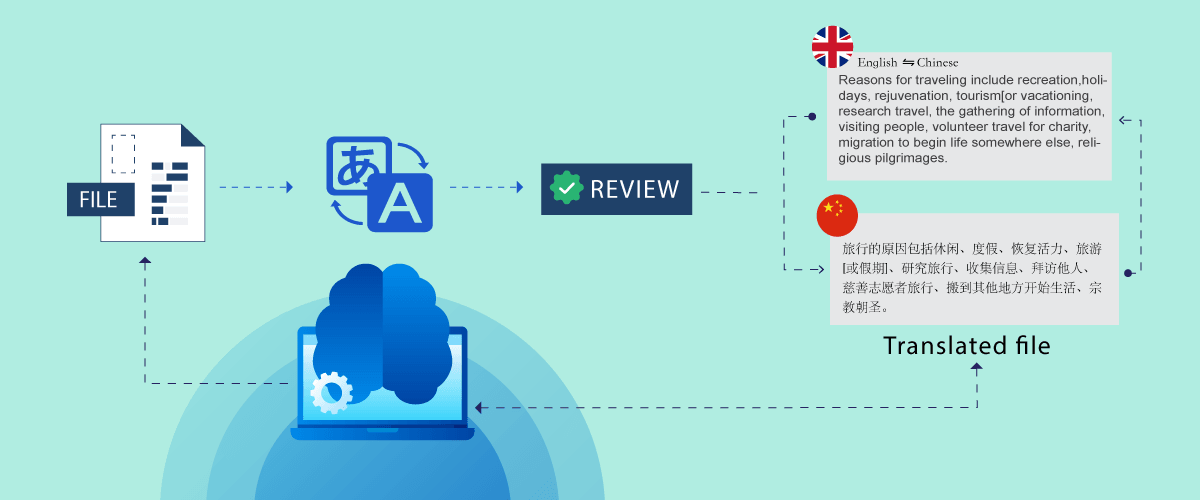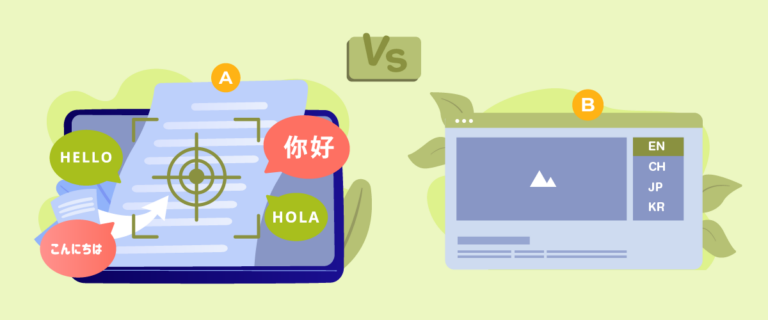Translation memory is a technology that speeds up the translation process by storing previous translation results for reuse in repeated content.
With this technology, translation localization can be done easily and quickly. Why is it easy? Because the website already has the translation results that have been carried out to be carried out again in the future.
For those of you who are still not familiar with translation memory, there is no need to worry, because in this article we will discuss everything from what translation memory is to the benefits of using it.
What is translation memory & how does it work?
A translation memory is a database of translated texts. The database contains segments, the segments themselves usually refer to sentences or phrases. Translation memory stores source language segments with their translations.
Translation memory is a feature commonly found in translation software, such as website translation solutions and computer translation tools (CAT tools).
When you use translation memory software, you don’t have to start every translation project from scratch. You can rely on the translator’s previous work or the work of other translators if you are working with a professional translator.
How translation memory works begins when a translator gets new content to translate, the translation memory software conditions the document to look for matching segments that already exist in the database.
After that the translation results will appear, if the translator finds problems with the loaded matches or makes changes, the translation memory can be updated with new, better translations. So the quality of translation using translation memory will continue to improve.
However, keep in mind that translation memory is not the same as termbase. Termbase is a searchable database containing multilingual terms and usage rules, it is created manually
Meanwhile, translation memory is a feature for storing original text segments and corresponding translation segments that are generated automatically by the software.
When should I use translation memory?
After knowing what translation memory is and how it works. Here are some situations where you should use translation memory.
- For recurring or regularly occurring content: If you regularly translate the same or similar documents such as technical manuals, legal contracts, annual reports, etc., translation memory will save you a lot of time by utilizing previous translations.
- For large-scale translation projects: Translation memory helps large projects with thousands of words or multiple documents much more efficiently by reducing redundancy.
- To ensure translation consistency: Translation memory helps you be consistent on words that appear repeatedly. So users will feel comfortable with your translation results.
- Frequently updated documents: If you release an updated version of a document, translation memory easily identifies changed content and makes it easy to provide translation updates. So you don’t need to start from scratch.
How does translation memory help localize your website?
As explained above, translation memory is usually found on software translation websites. On the other hand, the website localization process requires the help of automatic translation services to translate into various languages, at the end of which the translation memory comes into play.
By using translation memory, you can quickly and efficiently perform translations by retrieving previous translations of the same text phrases in your content. Translation memory will automatically provide existing translation results.
A real example is that on a website there is the phrase “About”, one of the language objectives of the website is French, when translated into French it becomes “A propos”.
The translation results of “A propos” will be saved in the web’s translation memory. In this way, the website will translate all “About” text into “A propos” in just one translation.
Likewise with various other phrases on the website.
How translation memory works in Linguise?
Translation memory can help you in translating and localizing websites. The automatic translation memory feature is found in automatic machine translation services.
There are many choices of automatic translation services that include translation memory technology, Linguise is one of them.
When your website is translated, an AI translation solution like Linguise stores previous translations in a database and will use them again for future translations.
This system ensures integration with AI machine learning tools so that translation accuracy is high. Additionally, Linguise enables post-translation review and collaboration in the dashboard with a live editor feature. This can improve the translation process and enhance the quality of website localization.
So how does translation memory work in Linguise? Below we will explain in detail from the beginning until your website is translated.
Step 1: Register Linguise account
To localize the website and save the translation results, you must register for a Linguise account first. Before subscribing, you can also try the free trial feature for 1 month, translating up to 600 thousand words!
Step 2: Integrate your website with Linguise
If the account is registered, then add the website domain you want to translate. There are several columns that you must complete, including Account, URL, Platform, Language, Translation Language, and Translation URL.
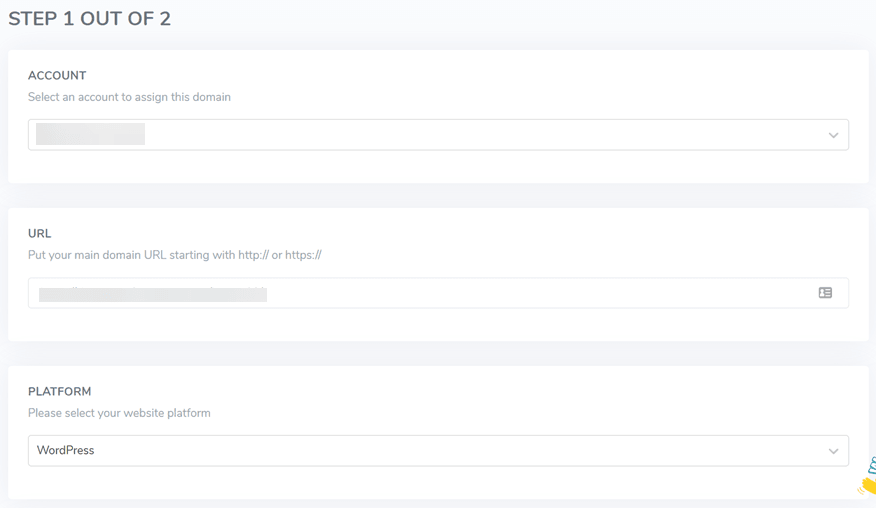
Then, copy the API key that you have obtained to paste it on your website dashboard.

For example, if you use WordPress, first install the Linguise plugin and paste the API key as shown in the following image.

Likewise, if you install Linguise on Joomla, or other website platforms, the method will not be much different.
Step 3: Translate the website automatically
If the website has been successfully integrated with Linguise, and you have also chosen which language will appear on the website, then all content on the website at that time will be automatically translated into the target language.
For example, if you want to translate the following website into German, in just a few seconds, the page will be translated immediately.

Step 4: Statistics translated words
Apart from that, Linguise also has a statistics dashboard, where you can see the total words and characters translated, that way you can find out how many words are left that can be translated. The number of translated phrases is stored in the translation memory and will be displayed when a translation request is made.
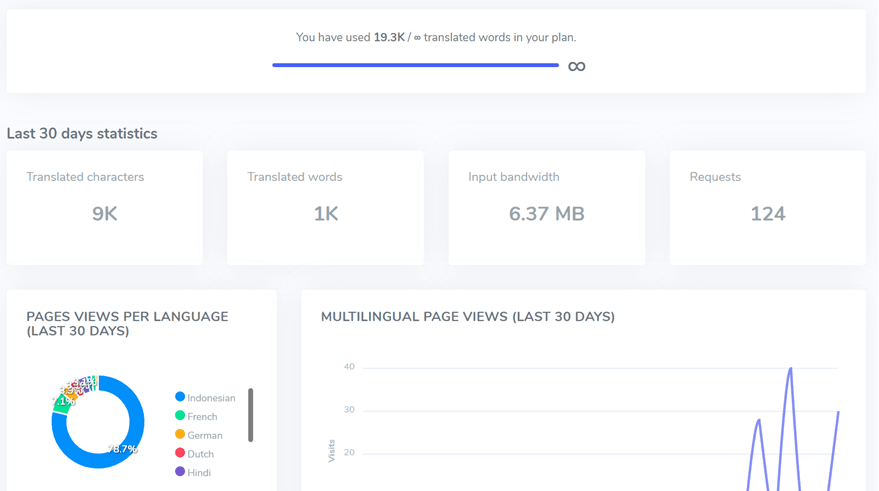
Step 5: Edit translated on the front-end editor
From the automatic translation that has been carried out, you can also edit the translation results if something is not appropriate. To edit it, you can use the front-end live editor. This feature can also be found in the dashboard > Live Editor.
For example, here we will translate from English to German. You only need to select which part you want to edit.
After the changes are saved, the most recent translation will be automatically saved in the translation memory.
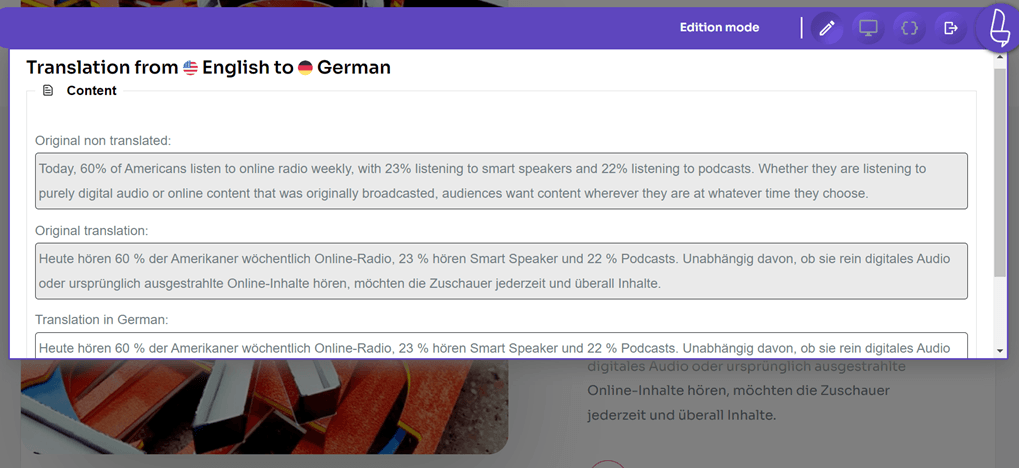
Step 6: Exclude translations using translation rules
Not only editing the translation results, you can also translate the translation to the desired phrase. Linguise has a translation rules feature where you can provide special rules, including:
- Ignore text that you don’t want to translate
- Replace the text translation with the translation you want
- Exclude content, this will avoid translation of multiple content on one page
- Set pages you don’t want translating
- Avoid line-wise translation

To do this, you can go to the Linguise dashboard > Rules > Add new rule.
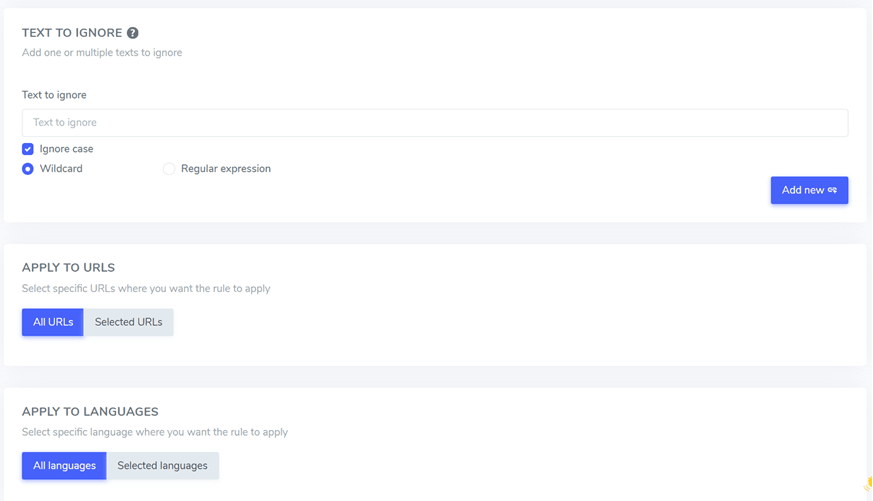
When the translated translation has been saved, these changes will also be automatically saved in the translation memory and applied automatically to all pages that have the same phrase.
Step 7: Collaboration with professional translators
Cultural and natural nuances are also needed on a multilingual website, to make this happen you can collaborate with professional translators who are experienced in the target language.
Linguise also provides a feature to setup translators on your website, you can add as many translators as you need with access rights that can be specifically set.
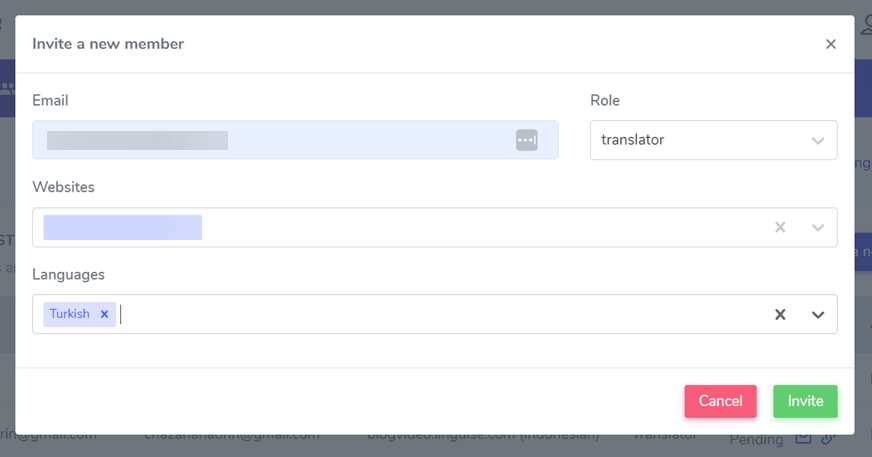
Benefits of using a Linguise that features translation memory
Below are several advantages points that you will get if you use Linguise which includes translation memory technology.
- Faster completion time: memorizing translations significantly speeds up translation completion time by rediscovering identical or similar text segments that have been translated previously. Instead of translating the entire document from scratch, translators can focus efforts on new sections only. This increases productivity by 2-3 times.
- Cost savings: translation memory reduces the redundancy of re-translating the same phrases and sentences. You only need to pay for truly unique words and segments. Cost per word can drop drastically on repeat projects.
- Quality and consistency: Linguise has a perfect translation quality of up to 97% similar to human translation. This will ensure high translation quality and consistency across retranslated content.
Translation memory for localizing your website with Linguise!
Now you understand what translation memory is. Translation memory is a database of text that has been translated and can be used repeatedly in the future.
By using translation memory, you can cut translation time, because the system will automatically provide previously saved translation results.
Translation memory is also implemented in the Linguise translation service, so what are you waiting for? Immediately register your Linguise account, add a website and translate the site quickly with us!

